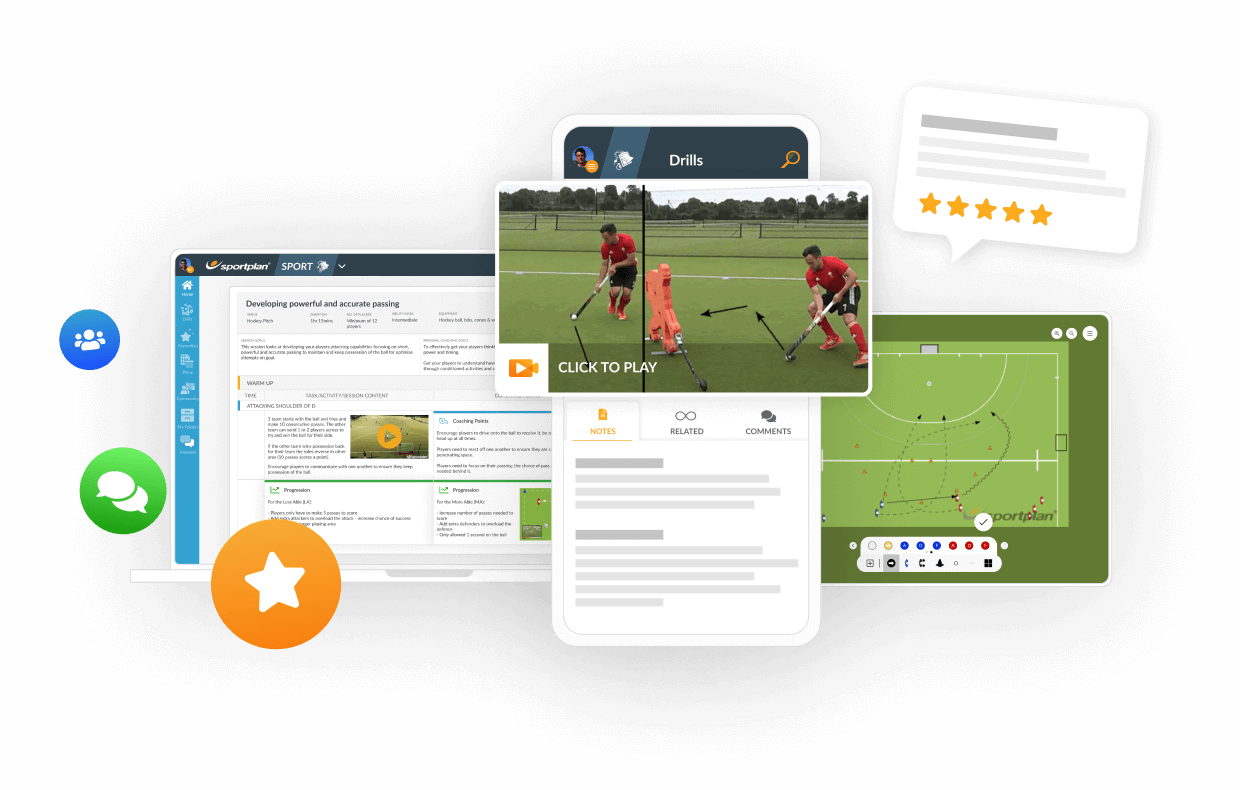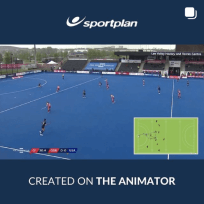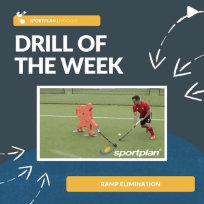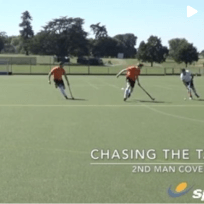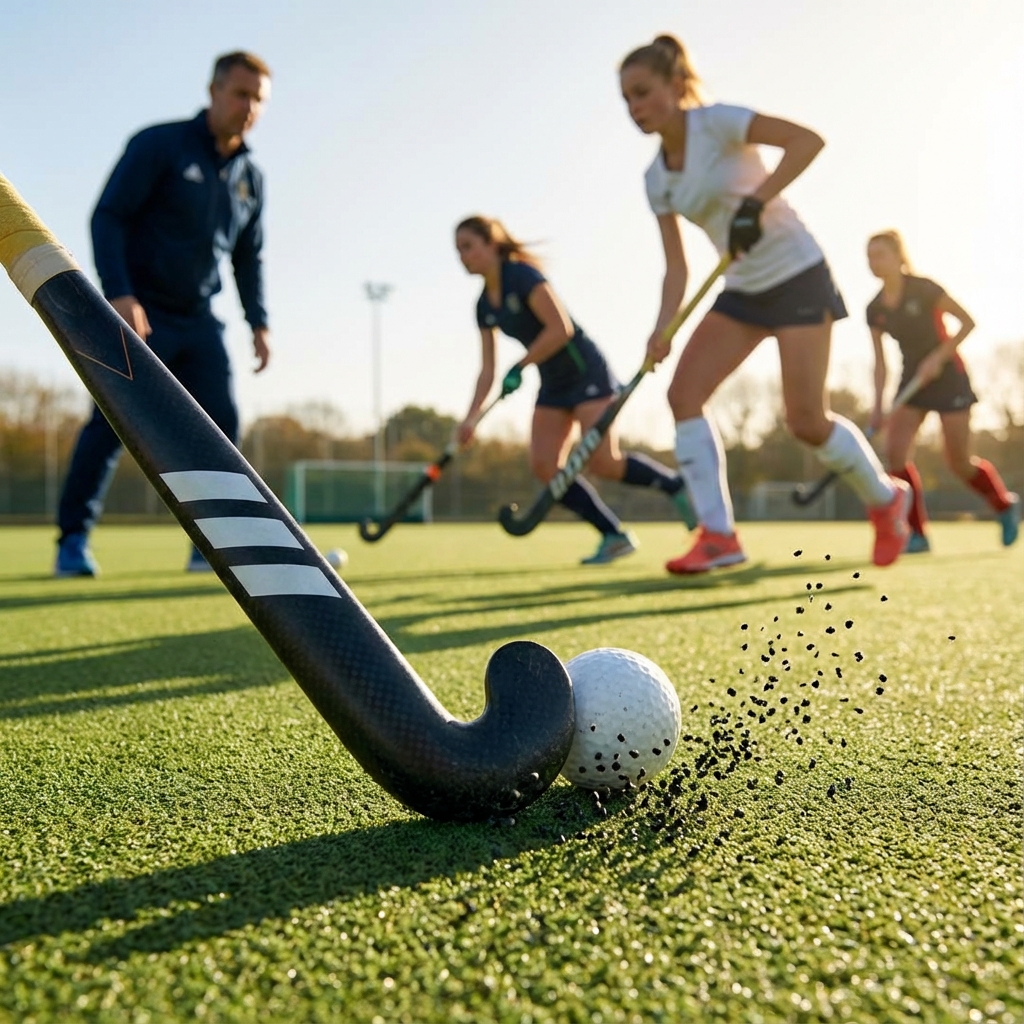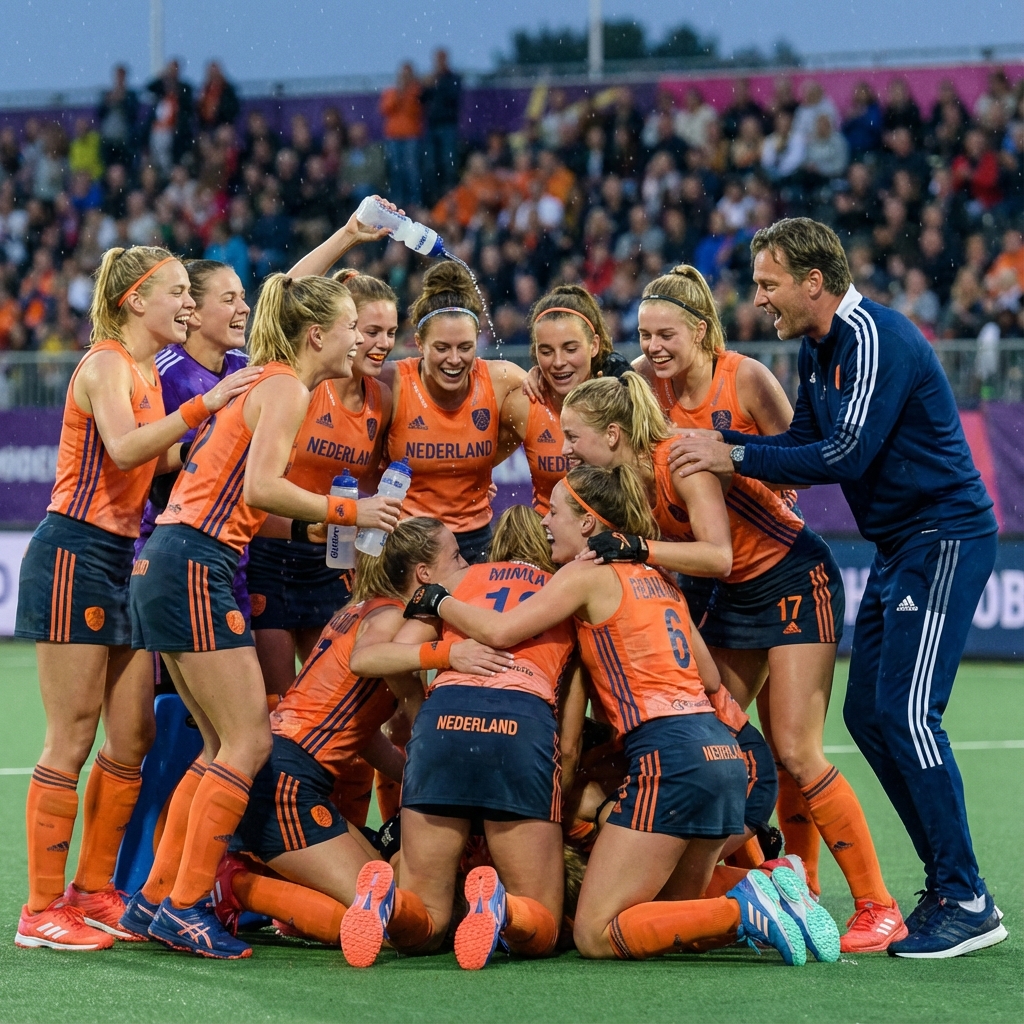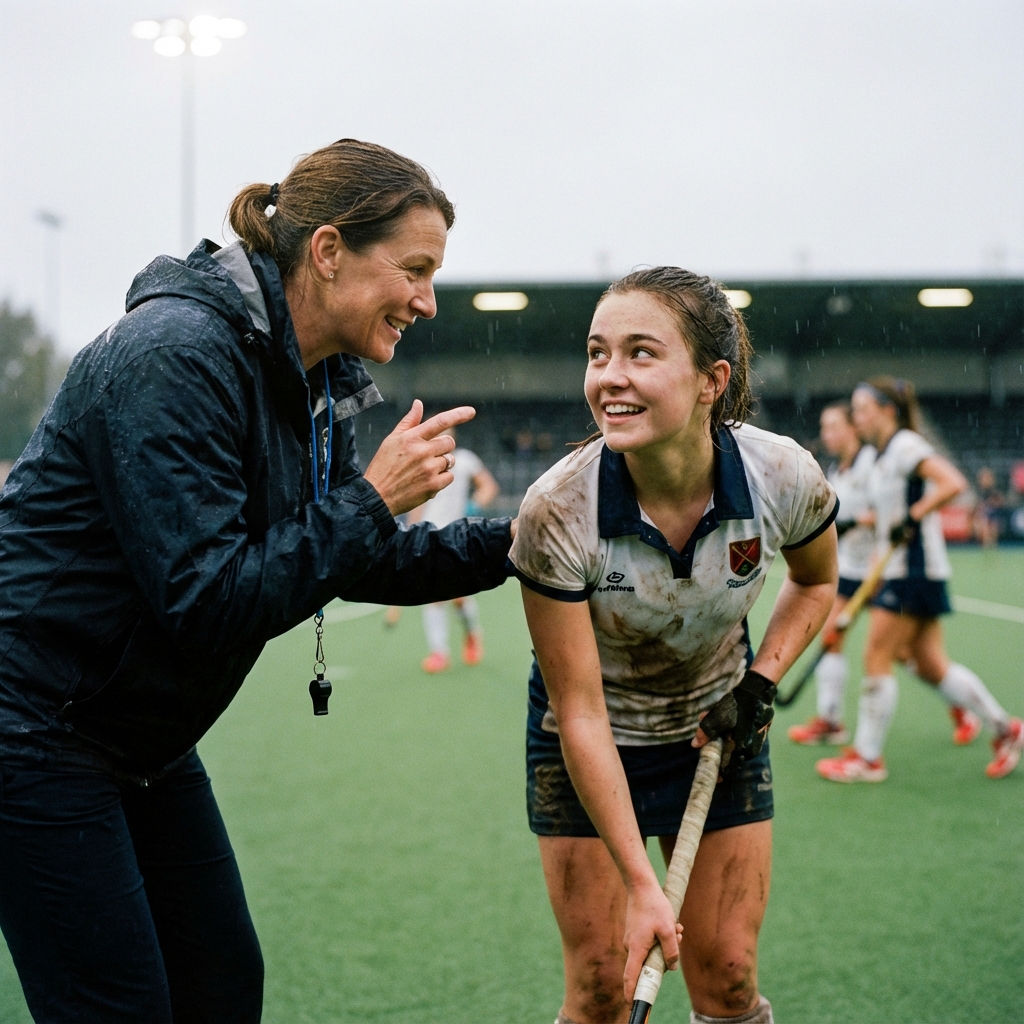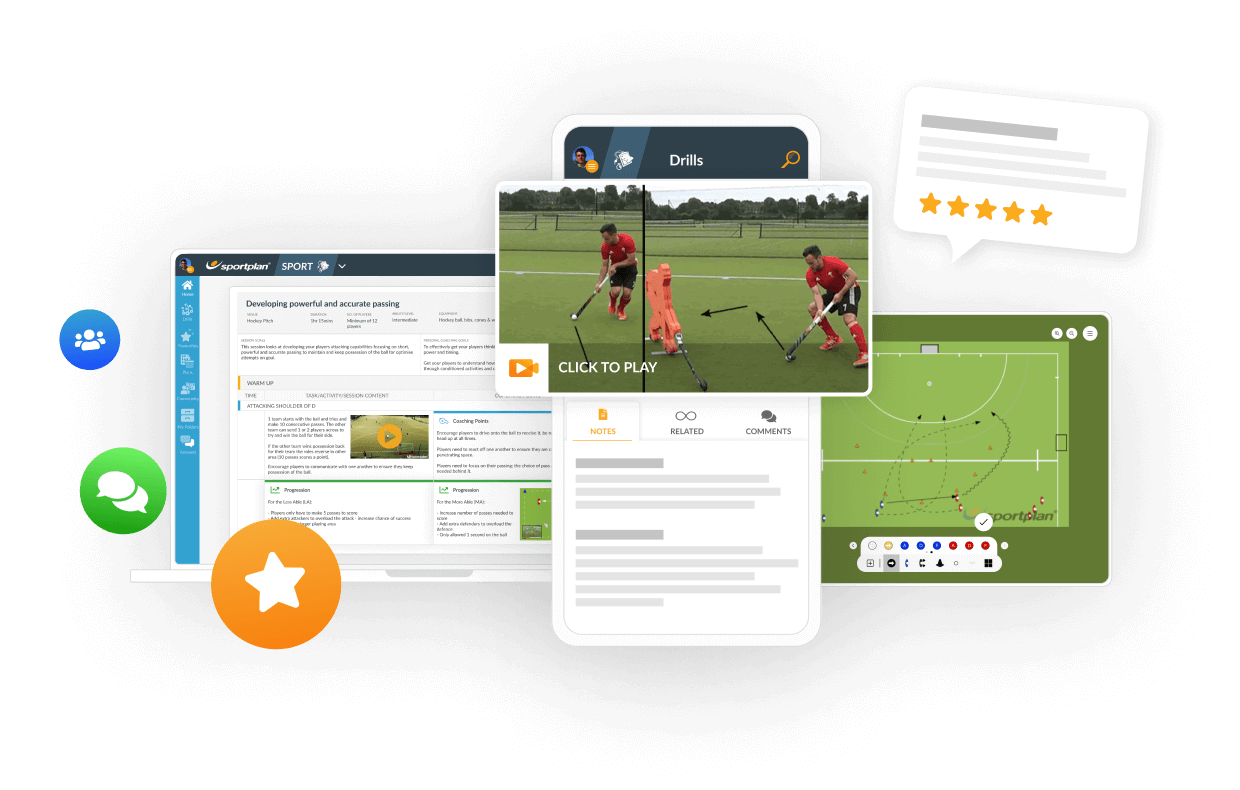How to coach school team with novices and experienced players?
Hi,I perhaps naively, expected to have most of our team from last year carry over and only have a few new comers to integrate and get up to speed with the rest. However meeting the team at our first practice last night i find I have five players still at school from last year and the rest all new comers, most of whom had not held a hockey stick at all till practice.This being only my second season coaching (year 9 to year 13 boys) has left me feeling a little blindsided, and feeling quite unsure how to prepare practices that target both groups of boys. Do i lump them both groups together, keep them separate? What drills/exercises to best bring the new comers up to speed.I don't want to neglect either group, keep practice worthwhile for the experienced boys, but also bringing the new comers up to a level were they can mix in with the others and learn organically from them while practicing as a team. David
Hi David,
Since you`re just starting, the whole team could do with a refresher of the `basics`. Your more experience players should simply need reminding and won`t need much assistance, giving you extra time to work with the newcomers and tweak individuals techniques.
Moving forward, I like to split the group up into 2 (stronger and weaker), who both complete the same exercise. This means players come against similar ability levels, and allows you to progress/regress the exercise depending on the group is coping.
At the same time, your less confident players will benefit from working with the more confident, so it is always good to do warm up exercises & end games with the entire group. You will usually find your higher level players will look to help out the newcomers. If the situation ever comes across that the stronger players try to take over a game, input stipulations into the game which prevent this (max number of touches, for example).
I hope this helps - I`d love to hear your thoughts.
Josh
Hi Josh,
My initial thoughts were that I would have to prepare and somehow coach two sessions at once. As you say a refresher of the basics wont hurt the experienced boys, after all without the basics done right and consistently there is not much point in advancing. I`m going to go through my session plans and notes from last season and reuse a few initially, adding something extra for the experienced boys to continue with if I`m still working with the new comers.
I broke a lot of the drills/skills down into a few smaller steps that they worked on in pairs or small groups as appropriate and then bought them all together so they could put the individual steps together, so there`s the opportunity for me to focus on the new comers where needed and for them to come together and mix in with the experienced boys. So I don`t think I need to change how I structure each session, but I must remember to keep an eye on and not forget the new comers will need a bit more assistance to start with.
I think I just panicked after our first practice. I wanted to be more prepared coming into the season after volunteering at the last minute last season. I had just thought and prepared my season outline assuming we would continue on from where we finished last season, and move on to trying 3D, different set piece strategies, and also the 3-3-4 formation that I asked about earlier. Perhaps I overthought it a bit.
David
Hi David,
Never any harm in planning that far ahead, but obviously a little bit irritating if you`ve got to go back to the drawing board and alter some of the sessions.
Certainly sounds like you`ve got a good plan in place. One of the best things I have found is to give out feedback forms, asking your players to list:
- What their individual strengths are?
- What they want to improve on as an individual?
- What the teams strengths are?
- Where they think the team needs to improve?
This makes players think about hockey outside of training, and seems to naturally push them to play to their strengths. You`ll also get plenty of ideas about what to do next at training.
Best of luck in the upcoming season!
Josh
Hi David and Josh
Please excuse the length of my reply and the content (in case it`s all stating the obvious, etc).
Well, your class make-up is a really tricky one to handle. I don`t envy you. It`s like maybe trying to teach a group of people to read, with some of them familiar with written word and others who are new to it all.
The main thing is to try and stretch everyone, so they come away feeling challenged and that they`ve got something from the session. Try and decide what an individual`s needs are, so you can tailor training. Obviously you`ll need to find common themes but look to reinforce hockey fundamentals.
I`ve coached both boys and girls, across a range of ages, from around 9 years old through to 16. I`ve worked to a modest degree with adults too (I managed/captained a team for 5 years and was coach on the day for the team).
My club senior section experiences are that we try to train together but split off for specialist work, which is team related (it pretty much equates to a split along experience and ability lines too). We`ve the luxury of separate coaches or at least people who can drive training along within the separate groups though.
I presume you`re completely on your own? You couldn`t even get a second person in, to run separate stuff, as necessary, under your guidance/supervision? I know they`d need to be DBS`d (sorry - can`t tell whether you`re in NZ or from NZ. DBS is our UK police check to make sure someone`s safe to work with kids/vulnerable adults) but is there a hockey club near you? Would they have anyone who could come & help? Perhaps a young leader (volunteer) or someone like that? Perhaps someone looking to do some Duke Of Edinburgh activity (I did think I`d just given you another englishism but apparently the DofE is international â crudely, the project encourages extra-curricular activities in 14-24 yr olds)?
For your situation, I`d probably split the group at some point, so that, as you say, they can train against others of their own standard and that your coaching can be targeted. However, keeping them together makes it vastly more manageable for you and I`d hope that the more novice players can observe how better players do stuff. Just make sure to thoroughly mix up the sides for balance, although you can add restraints to stop a technically stronger player just, for example, dribbling through the opposition (that player gains nothing from the experience and others will just get frustrated and alienated by it, though it would be an opportunity to practice channelling). As Josh says, limiting touches or time on the ball is one way. Modifying numbers per team too or perhaps numbers and/or position of goals, etc. Think about scoring methods as well e.g. one team scores or gains bonus points by stringing some passes together (as well as scoring normal goals) while the other has more stringent constraints I.e. play around with goal achievement, to focus the exercise towards where you want the growth to be.
The beginners will need more help from you and their individual requirements will be different. However, I wholly believe that strong basics are the platform for any kind of long-term development. All players will benefit from them. The selling point is that consistent basics are what international players excel at so if it works for them, it`s a great place to aim for, for your students.
To underline this, here`s an example. Iâve just started coaching at county level. The general technical standard of players is above average to good (some can do stuff with the ball that I can`t or at least 3d ball movement is a natural part of the game to them and they practice lifting the ball incessantly) but they don`t necessarily play hockey well and aren`t necessarily consistent in their individual play. This is frequently because they don`t get the fundamentals right (e.g. a good, strong, low posture). They might not get their footwork right or have just developed bad habits. You can actually play hockey if you can trap the ball consistently and can push pass. Obviously there`s a bit more to it than that but I think that`s good message to promote.
I like Josh`s suggestion about feedback too. This is something that EH (England Hockey) are trying to push and we`re about to see it emerging at county standard. Self-reflection hopefully gets players thinking about stuff. You could use that for progression and goal setting. It`s important to revisit it though further down the line, so that players can see where they`ve come from.
To finish, if you split the group, it`s vital that you bring them together again, so there`s some solidarity. An Australian coach I met on here says they do "3-2-1s" at their matches, where they basically vote for people who made the best effort (i.e. vote for 3rd, 2nd & 1st place). Obviously you can modify this because it could take ages to do but it does mean that more people get noticed. Apparently these votes are sometimes used to work out player of the season (think of all those votes to track â no thank you!). I thought it would be interesting though to try and bring it in for training. I wasnât able to make it consistent (because you sometimes forget or itâs lashing down, parents have grabbed their kids and dashed off, etc, etc) but that doesnât make it a bad idea. Decide what you want to bring out of the students most e.g. student who tried hardest to stick to the match-plan. When Iâve been on recent coaching courses, Iâve been told itâs more valuable to praise effort than necessarily achievement. Personally I praise anything positive, whether it was a great pass or well-timed tackle or a good decision. The âeffortâ thought process is that if you praise something theyâve pulled off, what then happens if they fail to do it another time (perhaps they lose confidence), whereas consistent investment of effort underpins most successful endeavours, so letâs reinforce effort and practice. Anyway, bring the groups back together. Thereâs another coaching strategy called "whole-part-whole", where you play a game, do a technical exercise to practice and focus on the coaching theme for the session, then play another game. This allows you to (a) mix up technical work and match play and (b) identify whether someone is succeeding or failing due to their decision making or their execution.
Picking up on the game theme as well - make sure you play as many games as you can. Aside from EH promoting game-play and trying to get away from drills, game-play is what people train for, it`s engaging and in a game you are practising skills in parallel (and in context) rather than isolation. Of course you may need to break down some sessions. You may even have to run purely technical sessions too but the onus is on making everything as game-related as possible.
For me, training kids is about making sessions interesting, because if theyâre interested, youâll keep their concentration and wonât have to waste as much time on discipline. My biggest challenge is trying to teach the same thing but in a different manner each week. For example, finding different warm-ups each week is a pain but always sets the tone for the session. Mix it up! Finally, have some fun. Youâll have a laugh and the kids will too.
I hope Iâve said something useful and havenât just taught you to suck eggs. I donât seem to get notifications of new posts here but do let us know how youâre getting on.
Cheers,
Gary
PS looking at your last reply, it sounds like you`ve found a way to manage your group, which is wonderful. Congratulations. Looking ahead is always good but make sure your sessions are needs based. For example, if people can`t pass the ball, then you know where you need to focus on. Introduce short corners, so they know what they are but you could do that as a break or change from normal training activities. Be creative and inventive with your training. Sometimes it will go wrong. See if you need to adapt something to make that session work or whether perhaps it was too advanced, etc. Regarding formations, my feeling is you need the personnel to deliver the formation you want to play, else it won`t work. For example, I really like 3 up front but you`d better have 3 great midfielders (and one really strong player in the middle) to make 3 mids work. Finally, your kids will only progress as quickly as they can absorb stuff. Don`t worry if progress is slow. The penny will drop at some stage. It might not even be with you. Plant the right seeds and they`ll sprout at some point.
Hi Gary
All good, no egg sucking been taught :)
Yup I`m sole coach, coaching a school team in Lower Hutt, New Zealand. There is one parent that has coached previously and at a higher level, he steps in every now and then offering guidance when I look lost, he also answers questions and makes a few observations about fine tuning something either at practice or at games. Our goalie from last year (finished school) has come back to help with our current goalie, so thatâs a huge weight off my mind. The boys are pretty much just dropped off at practice and the parentâs disappear for the hour. Some I feel are playing because they have to, so while not disruptive, they donât put too much effort in either. It is what it is, I volunteered because I promised my son I would try coaching if it was the difference between him being able to play a sport or not. Whilst feeling out of my depth and a little lost sometimes, the team did well. We gained promotion after the grading round and finished 3rd in our division at the end of season. On the whole i enjoyed it and it gave me something to do over the winter.
We`ve had a few practices since my initial panicked post and have one more before our first game on Friday. I`m feeling much better about practices and catering to the range of skill i have in the team. As it turns out the new comers aren`t as new as i had been lead to believe, so they`re quickly catching the rest of the team.
The penny dropping is a big thing, we had an `ah moment` at last practice. As part of this 3-3-4 formation I`ve been stressing to the boys that we need accuracy and correct weight when passing. Even though i had mentioned the change in formation explaining the space they`ll have to work in, it wasn`t till we had enough at practice and played the 3 strikers and 3 midfielders against 3 defenders and goalie that they got it. Was pretty chuffed, they also with only being reminded once, began passing backwards and across the pitch making use of both sides of field and all 6 players.
Looking forward to our first game, I`ll have a better idea of how the boys play together and what areas i need to spend time on practices.
I think the big take away for me is, I`m doing ok, yes my ideas and goals for the team have needed to change, but only a bit, the boys are improving. Bring on our first game!
Thanks, David.
Hi Guys,
We played our first game last night. We won 12-0. The boys came together very well. They played the 3-3-4 formation. This worked very well, both the strikers and midfielders seemed to just slide through the other team, they had the space to work in, the room to do their thing. The defenders did really well, facing down and stopping a few run-a-ways until the midfielders got back in support. The opposition wasnât the strongest that we`ll face, but definitely a confidence building game. It showed the 3-3-4 formation can/does work, the basics are there and they performed well.
Thanks, David
G`day I am that Aussie coach Gary mentioned.
Good to hear you are having success getting them all up to speed.
This year I put my hand up and was given a team that is 7 girls from our club and 6 girls from a local private school. They are a mix of abilities and efforts and part of the work that had to be done early was identifying those girls who were able to understand drills easily and could take instruction (coachability) and those that needed a bit of hand holding before they would join in. I have a good think after each training about where on a continuum of ability/effort/coachability and try to give players time where they can help others and time where they are helped. (also important for dividing up players for conditioned games)
I started off the season with the basics of "get the ball", "keep the ball" and "carry the ball" (tackling, how to avoid a tackle, when to run and when to pass) and organised tackling boxes and 3v2 games to put pressure on the skills they were learning. Everyone is praised for the effort they put in, whether it gets a result or not, because people who are scared to fail will not try and stretch themselves and learn what they are capable of. They all work hard, all conditioned games have winners and losers and losers do a lap. If I have done my job of choosing games and teams properly everyone will owe a lap by the end of the session.
At the end of each game we have a talk about effort and do our 3-2-1`s. (easy done, I have little slips of paper and a bag of pens from the $2 shop and the girls pass it around and the filled in slips go in a plastic sandwich bag for me to count later. These girls are all 16 and older, but on younger teams I get the manager to quickly add them up and the days winner gets a little pewter cup full of chocolates, which they invariably share around, I keep the cup). The 3-2-1`s also show me quite plainly what the mood of the team is. If someone is seen as not putting in and pulling their weight it is obvious. If I do my job properly, help weaker girls develop better skills so they can get involved (and not hide them up in the forward pocket like I see much too often) and frame the struggle to improve as the asset of most use to a developing team then by the middle of the season I should see a pretty even spread of points each week. ( I just have a spreadsheet with totals entered after each game). This is really all about trying to figure out girls teams. As far as boys teams go I just ask the GK who is slacking or what the mood of the team is and they are just straight up about it. They still do 3-2-1`s, they just all get added up to decide players player at the end of the season.
At the end of the post game sessions I have the players all tell the team something they saw that was in line with our team goals (develop skills, apply lessons from drills in games, apply 100% effort to 100% of your playing minutes) and have them leaving thinking about the positives from the game regardless of the final score.
I hope this helps.
cheers
Mick
@David
Wow - 12 nil! That`s a complete mauling! Congratulations.
It would be interesting to see how 4-3-3 stacks up against other formations which have more midfield players e.g. 4-4-2 or 3-4-3
As to penny dropping moments, they`re great aren`t they! Can`t say I get many of those but they`re very satisfying when they happen. Part of the problem is that you can try to guide players with knowledge and structure (drills, games, etc) but they still have to that lightbulb moment and to realise why it`s good to do something in a certain way. Requires a lot of patience!
As to transfers and passing backwards. Oh my goodness, that would be nice to see!
As you do more coaching you`ll become more assured about things and you`ll develop a repertoire of exercises and conditioned games to help teach different ideas. For example, the kingball game on the site here is nice (for picking passes and reaching high players - it can also introduce the idea of making timed leads). It doesn`t always work well. You need to get the size of the playing area just right, so that the other team don`t have too much space to cover - you don`t want to make the passes too easy to thread, because you want to get the transfers from side to side to do the work to make the spaces (to pass through). Playing with goals facing the opposite way to normal (bring them in from the baseline, etc) will encourage players to take height but of course you still need to get players to make choices between carrying the ball and passing (hopefully early). Then you need to get your forwards moving. Nothing as frustrating as a static forward, when you need them causing havok beyond the defensive line.
Anyway, sounds like you`re doing great though. I`m very pleased for you :)
@Mick
how you doing mate? Good to hear from you.
How you finding the girls getting on with each other? Any integration issues?
Regards,
Gary
G`day Gary
Things are doing great with them. It was really two teams to start with and a real spread of skills but with a bit of work we now see them playing beautifully together. The only issue I have now is that plenty of the girls came to me from teams where their coach had tried to hide them (I am sure you have heard the same thing, "oh, I used to always play as a back or a wing") and now they are playing for a team where we all count and we all have to work as hard as our skills and fitness will allow. One of the girls has acceptable skills but is not going to be able to run as far (or as fast) as I would like for her to ever get out of the backs so we have adapted a plan to allow her to play as a spare almost in the circle. When we have the ball we play 3 backs, 4 midfield and 4 forwards, with 1 of the inners playing back down in the centre so at times we have 5 midfielders. When we lose the ball the centres drop and we end up with 5 backs, 4 midfield and 1 forward. It means a fair bit of running so I try to always have 3 subs, but it also means that we have a solid defence and as long as we don`t turn the ball over by throwing it forward in panic we keep the ball for extended periods. The girls finally get it and have given up on traditional positions.
The first week we had trouble learning who to mark and didn`t know each others names, and got done 5-1. This week we kept the ball and had the other team defending their circle for the final 20 minutes. We finished nil all. This week we work on better midfield transfers and shooting LOL. With a bit more work we can sacrifice a back when we don`t have possession and allow us a higher and faster counter-attack if they turn the ball over.
Anyway, 13 more games before finals, plenty of time to get it right.
cheers
Mick
No, you are right Josh, playing higher and getting the ball back earlier is the preferred setup. And I am pretty crap at describing the setup. We are talking here about girls who are relatively weak on skills and who can`t make very hard accurate passes and so have to play closer together. The whole team, except 3 backs, moves up and gets into the press (for, say, 16`s) and last week the opp didn`t get to come back over the halfway line for more than 15 minutes in 50 minutes of play (even then backs mark out any high opp` players). We play against teams that (mostly) struggle with playing out wide and so if the opp` get a ball near the halfway we drop back a bit and whenever we get the ball back the plan is to first hold on to it (LOL) and get it out the other side of the field while our forwards move up. It worked very well for us last week and the few times the opp started with a sideline ball near the halfway we were very quickly back up over their 23. The field setup is almost a traditional style, just we have pulled our CF back and she drops even further if we don`t have the ball. The players are getting a better handle on IFIT (and get fitter, maybe) and I believe we will be playing a 3-3-3-1-gk formation before too long (yes one will always stay back behind the 23). Here is a pic of our position plan. http://img.photobucket.com/albums/v243/jindydiver/hockey/att-def-shift-left_zpslntbi9rq.jpg
As you can see it goes from 4-4-2-gk(black) back to a 2-3-4-1-gk (red, really 1-4-5-gk) when we lose the ball. This diagram is for a player with the ball coming down our left. All opp` forwards get marked hard and we have 2 centres to cover any passes down the centre. I welcome any ideas on how we can do it better (remembering that one of the backs is not a runner and her sole job is to mark the CF as they come across the 23).
hi Mick
Crumbs. Thank goodness for that diagram... or so I thought.
Seems a challenging set of movements to try and get a team to learn. However, I`m probably saying this too because this kind of stuff is where my knowledge is terribly weak.
I`m not quite sure what I`d do with a someone who isn`t a runner. I don`t know whether your runner comment is relative or absolute? I`d probably keep them out of critical positions and suffer the consequences (this is probably what you mean by hiding them away). For example, I have a player in my Junior team who isn`t actually too bad at marking but is terribly ponderous. He`s slow in thought and action. I put him at right defence because I think that will help him to tackle more easily but I recognise that it damages our attacking opportunities and makes outletting much more difficult. He`s got some learning difficulties, so isn`t developing at the same rate as other players but hockey for me is inclusive and it`s warming to hear that his confidence outside of hockey has come on leaps and bounds with his participation. I try to help him maximise his potential for success while minimising the impact of his weaker qualities.
Strategy and team positional behaviour are definitely a weakness for me. I tend to focus on developing an understanding of game fundamentals, playing mechanics and skills like movement off the ball, 1st touch, pre-scanning, channelling, tackling, passing, marking, basic structure & roles. I will focus on making better use of space on the pitch, being prepared to pass back to retain possession, etc. Most of my `battles` are getting players to play their positions, not running with the ball too much and working hard off the ball to make passes work. Awareness generally and awareness specifically of where space is and when to enter it are important lessons, especially for forwards. Obviously then there are general technical elements like ball control, good execution of techniques i.e. passing strength and accuracy.
I don`t think I`ve ever had a team where I`ve felt they`re consistent enough in their core play to start working on presses and managing changes in formation, relative to possession and ball position. I tend to micro-manage an awful lot in games, to help players with decision-making and timing.
How on earth did you teach your lot to have so much pitch awareness? Did you not find that the time spent doing that detracted from all the other areas of hockey that need to be examined?
Regards,
Gary
G`day again Gary
"but hockey for me is inclusive"
Our hockey association, Nationally, Regionally and at a club level consider this to be our core business, to facilitate hockey for all. We all of course work towards developing players with talent and drive so that they might enter into a stream that could see them reach their potential but we also have a responsibility to help those that are struggling to also strive and achieve if that is what they want. People who look at the way I have my team play might wonder what the benefits are, but if they look through the prism of "how does it help them win" they miss that a team is made of individuals and all of them have to have opportunities to shine.
These girls all understand the fundamental truth ....that to win at hockey you must first have possession of the ball. They are prepared to cede some field to the opp` so that they can press and mark properly and gain that possession and then start their attack. In that diagram you can see that it is at it`s most basic two defensive lines of 4 players. They have a striker putting pressure on the ball carrier and they have the wide wing half waiting to receive the ball out in space and start our counter-attack. It is not a system you would likely use if you had a different competition either. In the girls grade they face teams that struggle with transfers and are always looking to throw a ball forward in expectation that forward=ground gained regardless of the turn-over potential. Teaching the girls how to implement it was easy enough, they think of 4 across the back and 3 pairs of players leading up the centre. The players in the centre/forwards area know that they are either "centres", "inners" or "strikers" and that each role has a place on the field they operate. Their position on the field determines their designation and their role, rather than where they started the game, and the players are able to swap around their positions during the game. The most important part of making it work for them is that they communicate on the field.
As well as hating turnovers I am also not keen on players calling the ball just because they think they are free but without having thought about what they will do once they get the ball. Also, drills that replicate parts of the game help the players to recognise situations and react a bit quicker so they can use our preferred playing style.
Break it up into parts......
Half backs drop into defence, they mark out strikers
Centres are rotating to ditch their marks in att` and in defence the closest to the side the ball is on moves into a position to intercept a ball to the circle, the other centre picks up the opp` CF till the circle then hands off to deep back. You will normally now have 2 extra in defence than opp` have headed to the circle. The offside back and HB talk and work to get the HB free so that they can use space on off side of field. "inners" and offside striker move over to mark easy passes or to IFIT the opp` players. Ballside striker takes on the ball carrier. If we turn it over deeper in the field then those that are out of play work back and fill behind those players that are already setting up. It is a bit loose, we do see balls shot though the press, but any ball that makes the circle is often grabbed by us. Then it is simply get it to RH or a centre leading out right, then to the inner leading out right, then to the striker leading out right and we are back up in their circle.
Here is a drill I use to get them used to quickly changing to attack.
http://img.photobucket.com/albums/v243/jindydiver/hockey/outlet-up-right-web_zps69jq4trq.jpg
"1" passes across to set up timing for "2" to start run and weave to ditch mark. "3" times run to have ditched mark and be calling when "2" completes turn. "4" fakes lead forward then turns to receive ball in corner. You can have them fire a pass through cones, or have previous "4" call for pass and shoot (Imagine they are CF). During a game obviously the offside striker and inner are running forward to support, and if the leading player is hard marked then they use the space behind.
This worked well for the girls on Saturday. Right striker took the ball in close, passed to CF who was running forward and rebound off GK went straight to LI who was in space and picked the ball and shot for a goal. All the opp` defence were drawn to the right and gave our player at left inner plenty of time to shoot. The defence worked well. The opp` had only 2 shots at goal all game but jagged 2 PC`s and scored on one of those so we yet again tied, 1 all. More PC defence practice coming up LOL .
This drill, and shots on goal, are the only places where players are allowed to hard trap a ball. In all other places they are expected to take a trap softly and keep moving their feet. Soft traps combined with tackling drills that force players to channel properly rather than propping square are the fundamentals all the drills work from and above all we are taught to create games and drills that "look like hockey" so that players get to see situations and make realistic decisions while they work on their skills.
I hope this makes sense and helps.
Mick
"I don`t know whether your runner comment is relative or absolute?"
10 metres is a big sprint. 5 minutes of marking in the circle and she has to come off for a sit down. Skills suffer when tired, not unlike us old guys, so we must adapt.
I also have a player who is struggling with speed of thought. She plays RB now and her job is done in the first instance by the half and then handed off to her. It makes my RH work hard.
tbh if any players put in hard work, they will hopefully feel they`ve put some graft in i.e. worked to their potential and made a contribution.
Then they feel part of the solution and don`t feel like a hindrance. I see no problem with them resting if you can sub them. Also, hopefully their fitness will improve too. Perhaps that could be a personal goal to set.
As you say, we must adapt (to what we have at our disposal and make the best of everything).
I think I meant "I don`t know whether your runner comment is relative or absolute" to query whether they literally can`t/don`t run at all or just aren`t as fast as others.
As to your other post Mick. Thank you!
I`ll need to digest your exercise and explanation properly. Just wanted to acknowledge your post though.
I guess what I like most about your strategy and approach is that (I sense) everything is underpinned by the mantra of hard work and although that is relative, it`s still something that everyone can buy into. You`re not limited by your stick skills, etc. It`s about what you put in mentally and physically.
Regarding your exercise, how do you progress this? I`d want to see how the same players on stations 2, 3 & 4 responded to real defenders, etc. Cones don`t move, though they`re great tacklers :) How do your girls perform if you take the cones away (remove the structure they provide)? We always used to do exercises like this but England Hockey (EH) are frowning on this approach. Although you`re running a pattern, it seems restrictive (to me) due to the cones `guiding` the players. Please don`t think I`m saying your approach is `wrong`. I certainly have enough drills in my portfolio like this (though I don`t really use them now). I`m really trying to weigh up the more free-form approach to coaching that EH is pushing. The problem is about making sure players understand why they`re doing what they`re doing. It`s about active thought too rather than `weave between these two gate, pick up the ball and pass it on`. I think it`s easy to get lost in the microcosm of your own little bit of action. If they get the big picture of why the ball goes out wide, timing your run, posting up to receive the ball and shed the player, then that, to me, is the most important thing.
For example, have you found that your girls have worked out variants to this `move`? Maybe different ways of moving to ditch your marker? It`s a very tempting approach, to provide players with a playing framework to apply in a match. Makes them competitive while they`re still learning. Btw, what age and level of experience are your girls?
Gary
G`day Gary
The progression is to put defenders in to run with them. If you specify that defenders must stay goalside till the run begins then your players have the opportunity to get moving on the run and weave (that they time in relation to the pass). If they are getting the timing right on the run to the ball and post up and spin properly (turn and burn) the defender should be cut out pretty well. Stick the defender in on the #3 station so they have a practice run first (remove all cones except starting position). You can also put a defender in on station 4 to make it realistic. If the defender cheats (because they know already the point of the drill) you just have #3 run the ball in and force a reaction. If the players are reacting well (having fun, learning the concepts of game play) you can add a defender on the other side of the circle (where the last #4 is waiting for the cross) so that from station 3 it becomes a 3 v 3 game. Or you can just leave it at a defender at #3 and #4 and have 3, 4 and the previous #4 so it is a 3v2. I try to have all my drills evolve into games. I know from my own training that pressure makes a big difference to how well I can perform skills, and to how well I learn them :)
My girls learned a lot about how this drill works in real life on the w/e. The opp` team was way more skilled up (and mostly older) and they used something very similar to break our press and run away with the game. My girls could not find a way to break the opp` press and so we struggled badly. They did see though that with some hard work to develop faster ball skills they could do very much what the other team was doing and things would even out. We lost 9-nil with all the goals but one coming from PCs. We could hold them off well but eventually instincts take over and the girls start to defend the goal mouth rather than defend the passes and when you do that eventually an attacker will score a goal or a foot. They got their act together better in the second half, only 3 goals in second half, but it is clear that we have a long way to go if we want to win this division (our opp` are top of the ladder and undefeated).
My girls are all 15 (turning 16 this year) except for 3 that are 13 (turning 14 this year). We play in the under 18 division 2 comp, against players who can be anywhere from 13 to turning 18 this year. Unfortunately each year we face a team or two full of kids who are turning 18 and just cant fit into that clubs 18/1 division. That was the case this week, 6 girls who could well have played div 1 if their was room for them and who set up a press that just intimidated the hell out of my girls. It is just the nature of our environment here (number of players, number of clubs) and we just have to do our best.
And yes, my philosophy is about all the players owning the results, both good and bad. After the game this week I had one girl a bit upset that she wasn`t particularly good at tackling and feeling she would be way more comfortable playing as a wing like she did last year. We had a chat and it turns out her old coach just hid her up the top and she saw the ball maybe once a game if she was lucky. I asked her if she thought that she might play on as a senior after she leaves juniors (after 18`s) and she thought she might, so we talked about how useful some one dimensional player, a wing that spent her game chatting to a back all game, might be to a senior team, and whether she would feel satisfied with her contribution if that was how her games went every week end, compared to being a player that could take the field in almost any position if asked to and who could honestly say they owned a piece of every game, win or lose? All the players understand we value effort more than we value results and players who are working, even if they appear to not be succeeding very often, are showing up strongly in the 3-2-1`s so I know that at least in terms of team ethic I am succeeding.
12 degrees Celsius, just lost 9-0, and look at those smiles
http://img.photobucket.com/albums/v243/jindydiver/hockey/IMG_3204%201_zpsndhk6hm8.jpg
Cheers
Ah. All very interesting Mick.Thanks for taking time to reply.
That`s cool that you look to evolve the play. It can be anything from dramatic to hilarious to see how players can get so used to a routine and then have to actually react to a human being. For some reason this example has stuck in my mind. I`d set up a skill circuit for a senior team I played in and coached/managed. A couple of the stations involved using a technique to retain possession (e.g. pullback). I replaced the cone for that station with a player, to force the ball carrier to actually respond more dynamically. Suddenly distance and timing became acutely difficult to manage lol. Good though!
Regarding your recent match. 9-0 isn`t a good scoreline but my U16s had a similar pummelling in their last match. I was in awe of them though because up to the whistle, every player (baring one) was battling and competing. Their spirit put adult teams I`ve been in to shame. Playing potentially against U18s is tough too!
Regarding their ages, it`s particularly tough I think on younger ones. My team plays in an U16 division. Most of my players are around 15 yrs old. However, I`ve got 5 players who were technically U14 at the beginning of the season (at my club we split the age-groups into U8, U10, U12, U14, etc). Two of those 5 were only 12 yrs old at the beginning of the season. This means they could honestly be going up against 16 yr olds over the course of the 6 months or so in our season. Makes such a difference, both physically and experience-wise too.
So when you say "defend the goal mouth" do you mean they were defending the circle? So your playing area became very compressed and you had no-one to really get the ball out to, if you tackled successfully? Did the opposition play for PCs or was it just a natural consequence of having lots of your team in your circle?
It`s so good that you`re creating at atmosphere of taking ownership. That`s really important but also constructive and reflective. What we got right. What we could change, etc. Very important too to recognise what we can be better at i.e. if the opposition were much stronger, it`s vital to recognise what we can do and what our potential is. If your oppos were super strong, then your team must assess their performance in that context. Getting a hammering because their opposition were older, more able and more experienced doesn`t make them bad.
It sounds like you`re very level headed, given the way you chatted with your upset player. My first thought though was - everyone has a defensive responsibility and everyone has to tackle. That`s not just the duty of your back 3 or 4. Playing higher up the pitch doesn`t absolve you of responsibility. Good that you provoked some thought from her about what was comfortable and familiar and what might be more beneficial in the future.
Cheers,
Gary
G`day Gary
"when you say "defend the goal mouth" do you mean they were defending the circle?"
They all end up dropping back and just defending between their player and the goal, like romans locking together in battle ( LOL ) and it is easy for the opp to take their time and just pop a ball on to a foot. Some of the PCs were just luck, but some were entirely intentional. They just had to bide their time and one of the girls props a bit square and makes it easy for them.
"It`s so good that you`re creating at atmosphere of taking ownership. That`s really important but also constructive and reflective. What we got right. What we could change, etc. Very important too to recognise what we can be better at i.e. if the opposition were much stronger, it`s vital to recognise what we can do and what our potential is."
Thanks. Yep, the girls are reminded frequently that all that is required is the effort to learn and improve and that they apply themselves to the game. This is the path to getting better at hockey and winning games. The other team is there to ruin our game plan, to make everything as difficult as they can for us and the only response we have to that is to put in our best effort and if things go our way we can change the course of the game. At the end of each game during our post game chat we have a round table where everyone has a chance to relate to the team something they saw that reflects our team ethic (100% effort, 100% of the time) and they are allowed to point out individual examples. They are also allowed to bring up one issue each that they think we need to address and the rule is that it must not be about individuals but about "team". If people have an issue with another player, something they think needs addressing, they come to me or my manager privately to talk about it, but if they see something another player does that impressed them or inspired them then they are to bring it up at team talks.
The last girl to speak in the round table this week.... "team spirit! Everyone working hard right to the final whistle"... to me that is half the battle won.
Cheers
Mick








